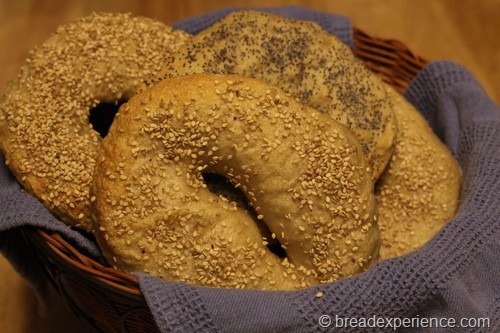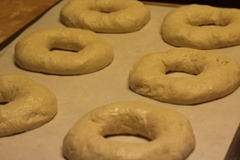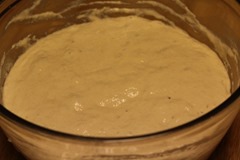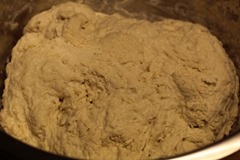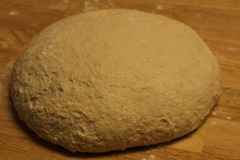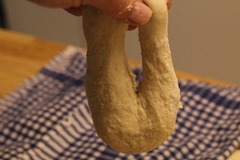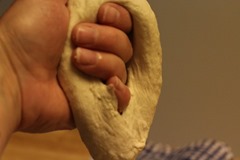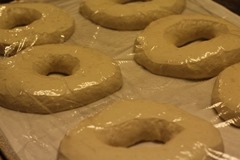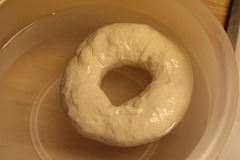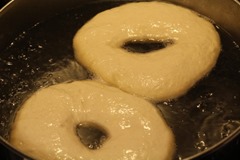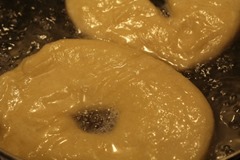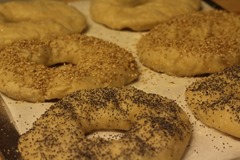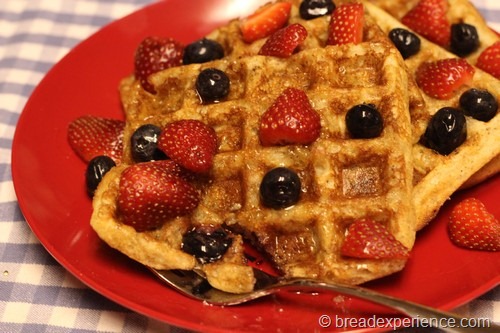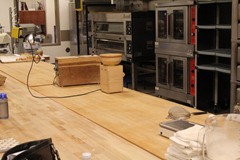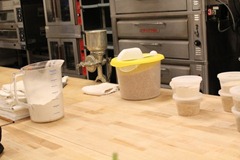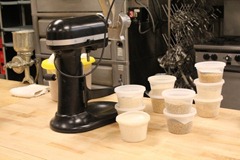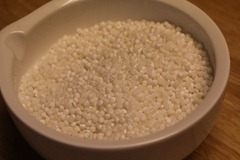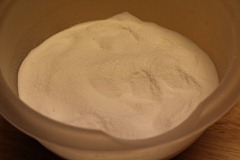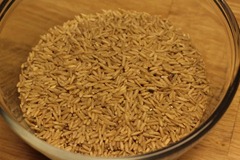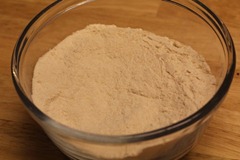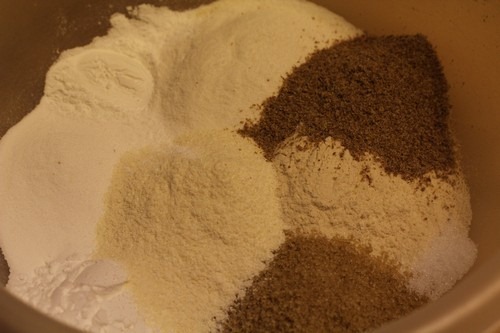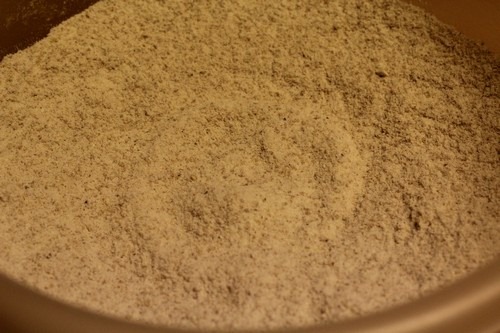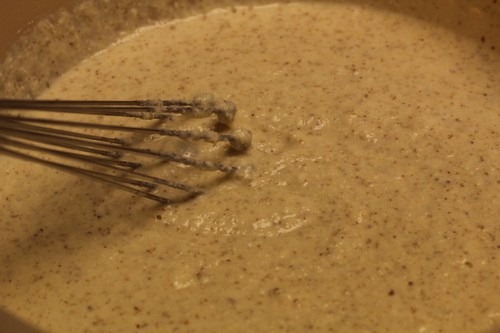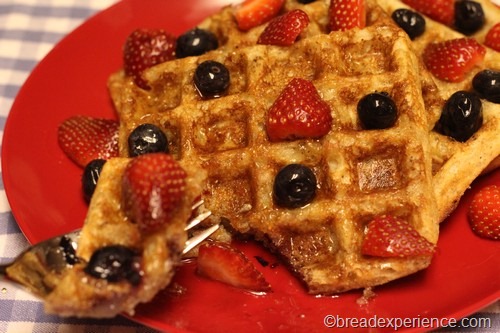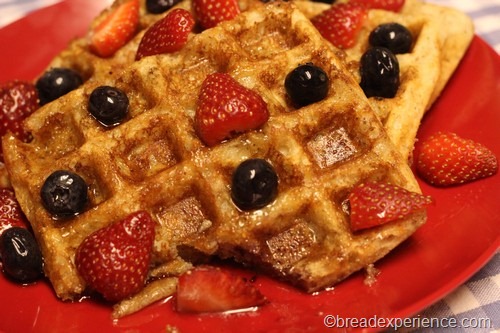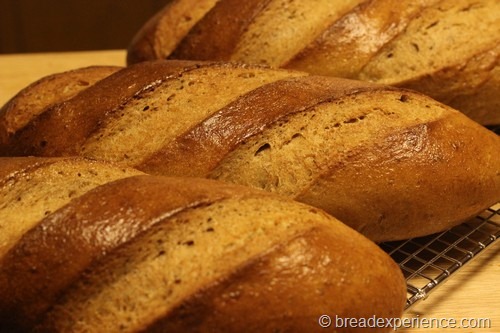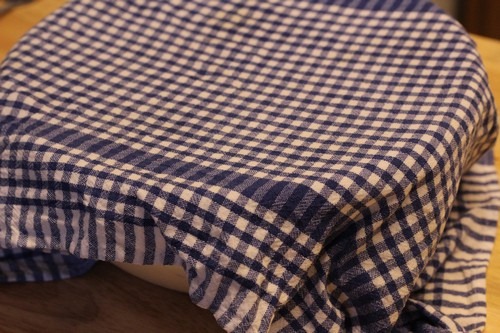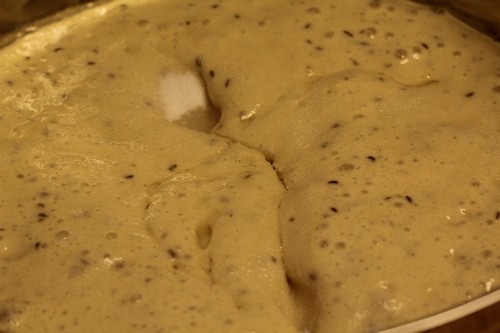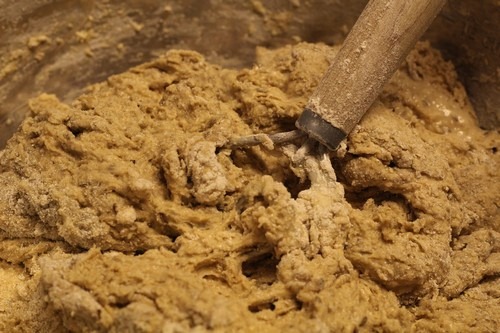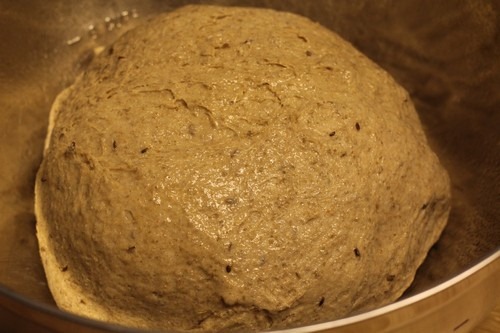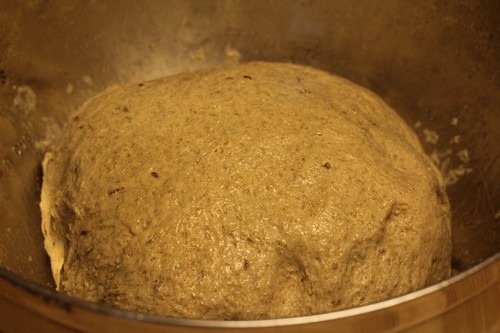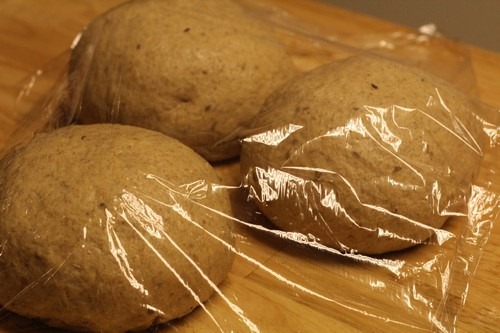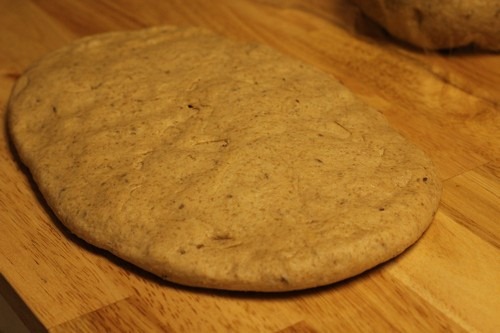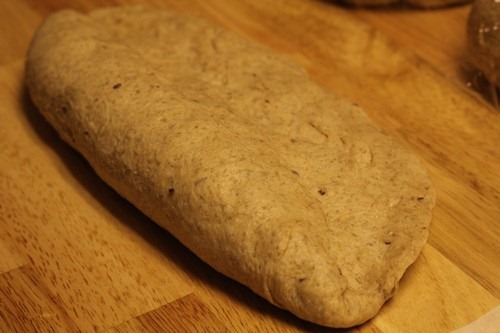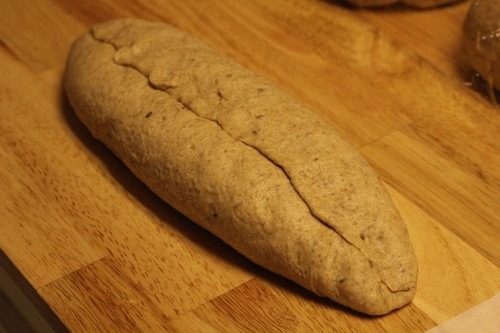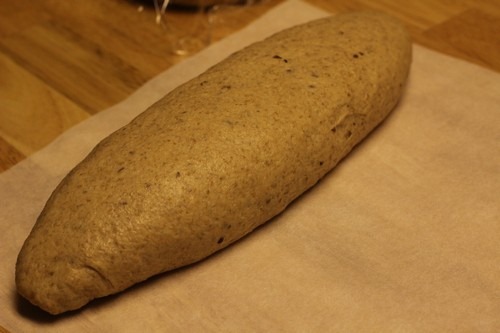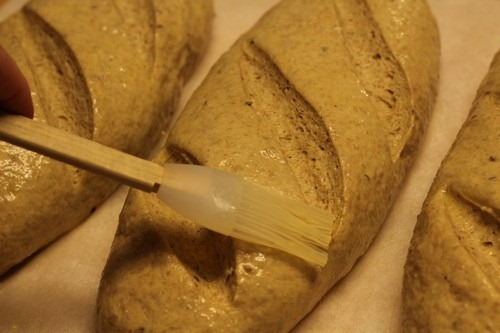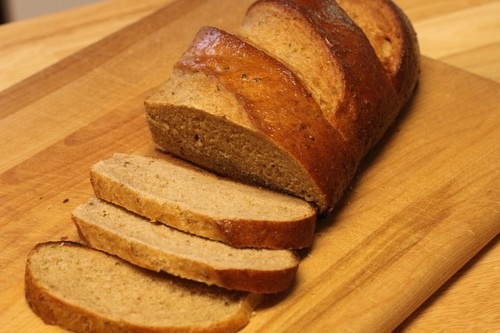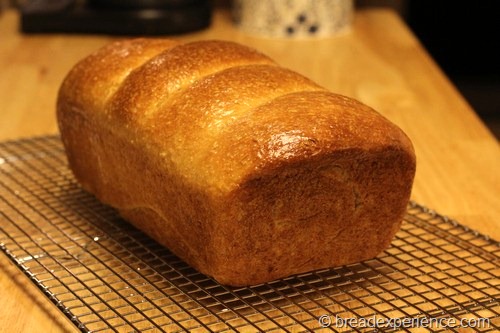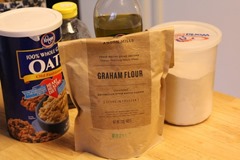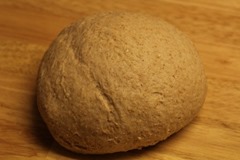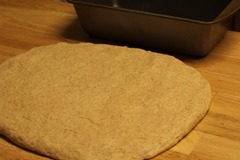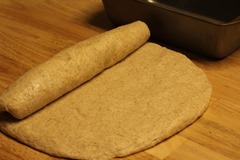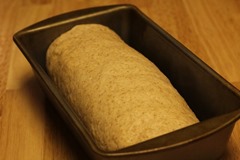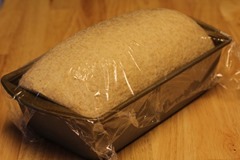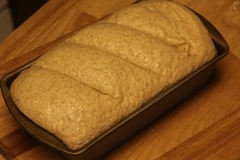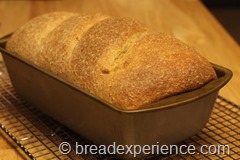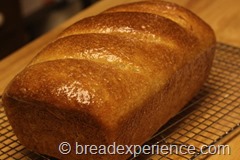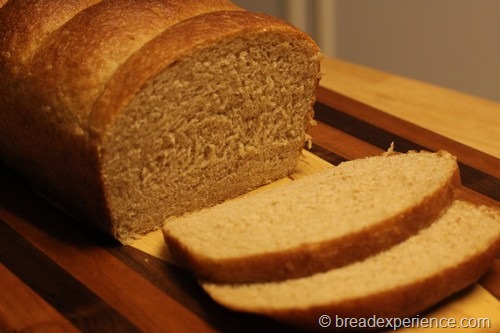I’ve got bagels on my mind. Sourdough Bagels, that is. I’ve been learning about the history of bagels and different techniques for making them so I was getting really hungry for one. I did what any reasonable bread baker would do… I made some.
These bagels are made using the method from The Bread Baker’s Apprentice which utilizes an overnight sponge. I made cinnamon raisin bagels during the BBA Challenge using this method. However, for this sourdough version, I substituted sourdough starter for the sponge. These bagels are made with very simple ingredients: sourdough starter, bread flour, salt, water, yeast and malt.
Did you know? For hundreds of years, authentic bagels were hand-formed and rolled out into 6-inch long ropes, looping them into donutlike shapes, and pinching the ends to close the circles. However, in the 1950s, bagel-making machines automated this process. A lot of modern bakeries utilize these bagel-making machines which can produce hundreds to thousands of bagels per hour.
I didn’t roll the bagels out into ropes and loop them, but I did shape them by hand and boil them in a water bath to produce the chewiness that is equated with authentic bagels.
Sourdough Bagels the BBA-way
Adapted from The Bread Baker’s Apprentice by Peter Reinhart
Makes: 12 large bagels or 24 smaller bagels
Ingredients:
Dough:
- 5 cups (35 oz) mature sourdough starter, fed
- 1 1/2 teaspoons (.055 oz) instant yeast
- 3 3/4 cups (17 oz) unbleached high-gluten or bread flour
- 2 3/4 teaspoons (.7 oz) salt
- 2 teaspoons (.33 oz) malt powder
- or 1 tablespoon (.5 oz) dark or light malt syrup, honey, or brown sugar
Finishing:
- 1 tablespoon baking soda
- Cornmeal or semolina for dusting
- Sesame seeds, poppy seeds, kosher salt (optional)
Directions:
1) Making the Sponge (from the Sourdough Starter)
Feed your starter with enough flour and water to make 5 cups. I doubled my starter, twice. Let the starter sit on the counter until it is bubby. I did this several hours before I started the process of making the dough.
2) Making the Dough:
Add the yeast to the sourdough starter and stir. Then add 3 cups of the flour and all of the salt and malt. Stir until the ingredients form a ball, slowly working in the remaining 3/4 cup flour to stiffen the dough.
Transfer the dough to the counter and knead for at least 10 minutes. The dough should be firm, but still pliable and smooth. All the ingredients should be hydrated. If the dough seems to dry, add a few drops of water and continue kneading. If the dough seems tacky or sticky, add more flour to achieve the stiffness required. The kneaded dough should feel satiny and pliable but not be tacky.
3) Shaping the bagels
Divide the dough into 4 1/2-ounce pieces for standard bagels, or smaller if desired.
Cover the rolls with a damp towel and allow them to rest for approximately 20 minutes. Line 2 sheet pans with baking parchment and mist lightly with spray oil.
Poke a hole in a ball of bagel dough. Gently rotate your thumb around the inside of the hole to widen it to approximately 2 1/2 inches in diameter. The dough should be as evenly stretched as possible.
Place each of the shaped pieces 2 inches apart on the pans. Mist the bagels very lightly with spray oil and cover loosely with plastic wrap. Let the pans sit at room temperature for about 20 minutes.
4) Retarding the bagels in the refrigerator
You can check to see if the bagels are ready to be retarded in the refrigerator by using the "float test". Fill a small bowl with cool or room-temperature water. The bagels are ready to be retarded when they float within 10 seconds of being dropped into the water.
Take one bagel and test it. If it floats, immediately return the test bagel to the pan, pat it dry, cover the pan, and place it in the refrigerator overnight (it can stay in the refrigerator for up to 2 days).
5) Preparing to bake the bagels
The following day (or when you're ready to bake the bagels), preheat the oven to 500 degrees with the two racks in the middle of the oven.
Bring a large pot of water to a boil (the wider the pot the better), and add the baking soda. Have a slotted spoon or skimmer ready. Remove the bagels from the refrigerator and gently drop them into the water, boiling only as many as can comfortably fit (they should float within 10 seconds).
After 1 minute flip them over and boil for another minute. If you like very chewy bagels, you can extend the boiling to 2 minutes per side.
While the bagels are boiling, sprinkle the parchment-lined sheet pans with cornmeal or semolina flour. If you want to top the bagels, do so as soon as they come out of the oven. I sprinkled some with poppy seeds, some with sesame seeds, some with kosher salt and left a few plain.
6) Baking the Bagels
When all the bagels have been boiled, place the pans on the 2 middle shelves in the oven. Bake for approximately 5 minutes, then rotate the pans, switching shelves and giving the pans a 180-degree rotation.
After rotating the pans, lower the oven setting to 450 degrees and continue baking for about 5 minutes, or until the bagels turn light golden brown (or darker if you prefer). Remove the pans from the oven.
7) Cooling the Bagels
Let the bagels cool on a wire rack for 15 minutes or longer before serving.
My oven was being finicky so the bagels got a bit too crispy (for my liking) in some places. They were also a little flatter than I had expected. I kept the dough in the refrigerator for the full 2 days so I’m thinking they might’ve risen more if I had baked them the next day. I’ll have to experiment with that next time.
In my research, I found that Montreal bagels are generally flatter and smaller than New York bagels, and they are baked in a wood-fired oven so they have crisper crusts. So there you go…
Happy Baking!
Cathy
